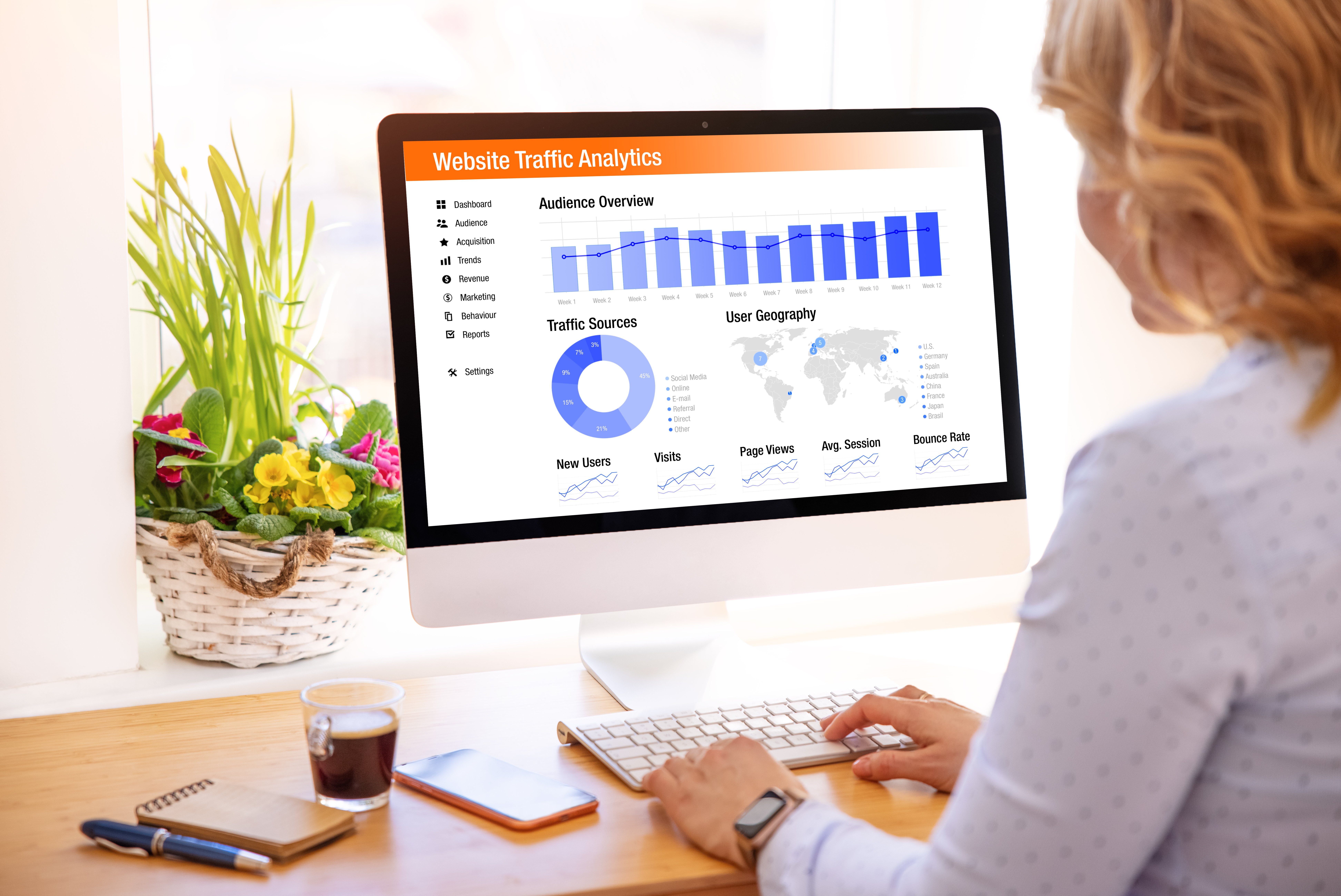
Three Easy and Reliable Ways to Check Your Website's Google Rankings

In the world of digital marketing, few metrics hold as much importance as your website's Google rankings. A high ranking on Google can significantly impact your online visibility, organic traffic, and ultimately, your business's success. But how do you keep tabs on your Google rankings? In this post, we'll explore three fast and accurate methods for checking your Google rankings, helping you stay on top of your SEO game.
Table of Contents
Manual Search
One of the simplest and most straightforward methods for checking your Google rankings is by conducting a manual search. This method allows you to quickly get a sense of where your website stands in the search results for specific keywords. Here's a more detailed step-by-step guide on how to perform a manual search:
1. Open an Incognito Window:
To ensure that you receive unbiased and non-personalized search results, it's best to open an incognito or private browsing window in your web browser. This mode prevents search engines from using your search history and cookies to tailor the results to your past behavior.
2. Enter Your Keywords:
Type in the keywords or key phrases you want to check your rankings for. Make sure you use the exact keywords or phrases you are targeting in your SEO strategy. It's important to use quotation marks for exact phrase matching or use + signs to include all the keywords in your search.
3. Analyze the Results:
Once you hit "Enter," the search engine will return a list of search results. Scroll through the first page to find your website's position in the rankings. Note that the results may vary based on several factors:
- Location: Google personalizes search results based on the location of the user. Therefore, if you want to check rankings in a specific location, you may need to use a VPN or change your search location settings.
- Previous Searches: Your search history can influence the results you see. To minimize this effect, use the incognito mode as mentioned earlier.
While manual searches offer a quick and direct way to gauge your rankings for individual queries, they may not be the most efficient option for comprehensive rank tracking, especially if you're monitoring a large number of keywords. For broader, ongoing ranking analysis, you may want to explore other methods, such as using SEO tools or Google Search Console.

Google Search Console
Google Search Console, formerly known as Google Webmaster Tools, is a free and invaluable tool for website owners, SEO professionals, and digital marketers. It provides a direct channel to Google, allowing you to monitor and manage your website's presence in Google search results. More specifically, Google Search Console offers a wealth of data related to your site's performance, including insights into your Google rankings.
How to Use Google Search Console for Ranking Insights:
Set Up Google Search Console:
If you haven't already done so, you need to set up your website in Google Search Console. This involves verifying ownership of your site by adding a small piece of code to your website or using an alternative verification method.
Access Performance Reports:
In the Google Search Console dashboard, navigate to the "Performance" section. This section provides an array of data related to how your site is performing in Google Search.
Check Average Position:
In the "Performance" section, you can view key metrics such as total clicks, total impressions, click-through rate (CTR), and average position.
The "Average Position" metric is particularly relevant for tracking your rankings. It indicates the average position of your site for specific search queries. By analyzing this data, you can identify which keywords are driving traffic to your site and their respective average positions.
Google Search Console is a must-have tool for website owners and SEO professionals. It offers direct insights into how your website performs in Google search results, making it an essential asset for tracking your Google rankings and optimizing your SEO strategy. Find out more about the Google Search Console in the blog post here.

Third-Party SEO Tools
In addition to manual searches and Google Search Console, third-party SEO tools are powerful resources for tracking and analyzing your website's Google rankings. These tools are designed to provide comprehensive data and insights into your SEO performance, making them indispensable for website owners, SEO professionals, and digital marketers. Here's how to use third-party SEO tools to check your Google rankings:
1. Choose an SEO Tool:
The first step is to select an SEO tool that aligns with your specific needs and goals. Some of the most popular and trusted options include SEMrush, Ahrefs, Moz, and many others. The choice of tool will depend on factors like budget, required features, and personal preferences.
2. Enter Your Website and Keywords:
After selecting your preferred tool, you'll typically need to enter your website's URL and the specific keywords or key phrases you want to track. Many SEO tools provide options for tracking various aspects of your SEO performance, including rankings, backlinks, and on-page optimization.
3. View Ranking Data:
Once you've set up your tracking parameters, the SEO tool will provide you with detailed ranking reports. You can review these reports to see where your website ranks for the selected keywords, how your rankings have changed over time, and other pertinent data.
While third-party SEO tools offer robust tracking and analysis capabilities, it's important to note that they may provide data that slightly varies from what you see in Google Search Console. However, by using these tools alongside other methods, you can achieve a more comprehensive understanding of your website's rankings, traffic, and overall SEO performance. Check out some of the top SEO tools in this blog post here.
Comparison
Now that we've explored the three methods for checking your Google rankings, it's essential to understand the advantages and limitations of each approach. Let's take a closer look at how these methods compare to help you make an informed decision about which one is best for your specific needs.
1. Manual Search:
Pros:
- Simplicity: Manual searches are easy and accessible to anyone without any additional tools or costs.
- Real-Time Results: Manual searches provide you with real-time search results, making them suitable for quick checks or initial assessments.
Cons:
- Limited to Individual Queries: Manual searches are best suited for checking rankings for specific keywords or key phrases but may not be practical for tracking multiple keywords or conducting comprehensive SEO research.
- Variability in Results: Results can vary based on your location, search history, and other factors, making them less reliable for ongoing rank tracking.
2. Google Search Console:
Pros:
- Data Straight from Google: GSC provides data directly from Google, making it highly reliable and reflective of how Google sees your site in its search results.
- Comprehensive Insights: GSC offers a wealth of data, including average position, click-through rates, total impressions, and page performance, helping you make informed SEO decisions.
- Click-Through Rate (CTR) Insights: Understanding CTR is essential because it reveals how often users click on your search results when they see them. A high CTR indicates that your listing is attractive to users and well-optimized for the given keyword.
Cons:
- Data Delays: GSC data may be slightly delayed, meaning you might not receive real-time information. Cross-referencing with other tools is recommended for a more comprehensive view.
- Limited to Keywords You Already Rank For: GSC mainly provides insights into keywords you already rank for. It might not offer data on keywords you're targeting but haven't yet ranked for.
3. Third-Party SEO Tools:
Pros:
- Extensive Keyword Tracking and Analysis: Third-party SEO tools offer comprehensive keyword tracking capabilities, enabling you to monitor a wide range of keywords.
- Competitor Analysis: Many tools allow you to track both your own rankings and those of your competitors, providing valuable competitive insights.
- Custom Reporting and Alerts: SEO tools often provide customizable reporting features and alerts for significant ranking changes.
- Data Aggregation: These tools aggregate data from various sources, offering a more complete and accurate picture of your SEO performance.
Cons:
- Subscription Fees: Many third-party SEO tools come with subscription fees, which may vary based on the level of access and features you require.
- Learning Curve: Using these tools effectively may require a learning curve, particularly for those new to SEO.
Which Method Should You Choose?
The choice of method depends on your specific needs and goals. Here are some considerations to help you decide:
- Manual searches are quick and accessible for occasional checks or quick assessments but aren't suitable for comprehensive rank tracking.
- Google Search Console provides valuable insights directly from Google and is an excellent choice for tracking keywords you already rank for and gaining CTR insights. It's a must for every website owner.
- Third-party SEO tools offer the most comprehensive insights and are ideal for in-depth keyword tracking, competitor analysis, and customized reporting. However, they may come with subscription fees and require some learning.
Ultimately, many professionals choose to combine methods to achieve a more comprehensive view of their rankings. Manual searches and Google Search Console can provide quick, reliable insights, while third-party SEO tools offer in-depth analysis and competitive data.

Best Practices
Tracking your Google rankings is a fundamental aspect of your SEO strategy, but achieving accuracy is essential to make informed decisions. Here are some best practices to ensure that your ranking tracking is as precise and insightful as possible:
1. Regularly Track Your Rankings:
SEO rankings are not static; they can change frequently. It's essential to track your rankings regularly to monitor trends and assess the impact of your SEO efforts over time. Weekly or monthly tracking is a common practice, but the frequency may depend on your specific goals and industry.
2. Be Cautious of Personalization and Localization:
Keep in mind that search results can be personalized and localized, meaning they may vary based on the user's location and search history. To mitigate this, use incognito or private browsing mode and tools that allow you to perform location-specific searches when tracking your rankings.
3. Adjust Your SEO Strategy Based on Ranking Data:
Tracking your rankings isn't just about gathering data; it's about using that data to improve your SEO strategy. When you notice changes in your rankings, whether positive or negative, consider adjusting your strategy accordingly. If a keyword is consistently performing well, you might want to optimize more content around it. Conversely, if a keyword isn't ranking as expected, you can revisit your optimization efforts.
4. Track a Variety of Keywords:
Don't fixate on a single keyword or a handful of keywords. A robust SEO strategy should target a diverse set of keywords that reflect user intent and your business goals. Tracking various keywords provides a more comprehensive view of your SEO performance.
5. Cross-Reference Data from Multiple Sources:
To ensure accuracy and reliability, it's a good practice to cross-reference data from different sources. For instance, compare the results from Google Search Console with those from third-party SEO tools. This helps you identify any inconsistencies or anomalies.
6. Document and Interpret Data Trends:
Keep a record of your ranking data over time. By documenting changes and trends, you can gain insights into how your SEO strategy is evolving and whether adjustments are needed. For example, if you notice a gradual improvement in rankings for certain keywords, it may indicate that your optimization efforts are paying off.
7. Set Realistic Expectations:
SEO is a long-term game, and rankings can fluctuate. It's important to set realistic expectations and understand that results may not be immediate. Consistency in your SEO efforts and monitoring is key to achieving lasting success.
8. Review Historical Data:
Historical ranking data is valuable for assessing long-term progress. By reviewing historical data, you can see how your rankings have evolved and identify patterns and trends that might inform your future strategy.
9. Utilize Data to Inform Content Strategy:
Ranking data should not exist in isolation. Use this data to inform your content strategy. Identify which keywords are driving traffic and consider creating more content around those keywords or optimizing existing content.
Final Thoughts
Regularly monitoring your Google rankings is crucial for a successful SEO strategy. By using the right methods and best practices, you can gain valuable insights and stay ahead in the ever-competitive world of digital marketing. So, start tracking your rankings today and watch your online visibility soar. Your business's success may depend on it.
Ready to take your SEO and Google ranking to the next level? Two Trees PPC is here to help you reach the top of the search results. Our expert team specializes in optimizing SEO strategies that drive results. Contact us today to discuss how we can supercharge your online presence and help your website rise through the rankings. Let's boost your visibility and attract more organic traffic together!

